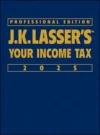Roth IRA Conversions: Now and Next Year
Roth IRAs offer the opportunity to build up tax-free income for your future. You can use this income in retirement at no tax cost or leave the money as a tax-free inheritance for your spouse, children, or others. There’s no requirement that you make any withdrawals during your lifetime as there is with a traditional IRA; your beneficiaries will have to make withdrawals but may have little or no tax to pay.
Roth IRA Contributions
There are two ways to build up a Roth IRA: make annual contributions or convert a traditional IRA or qualified retirement plan account to a Roth IRA. Annual contributions are limited in 2009 to $5,000 ($6,000 if you are at least 50 years old during the year). Your contribution cannot be more than your earned income for the year and is reduced by any deductible contributions you make.
For 2009, you can contribute to a Roth IRA only if your modified adjusted gross income (MAGI) does not exceed $105,000 if single or $166,000 if married filing jointly. A partial contribution is allowed if MAGI is between $105,000 and $120,000 if single or $166,000 to $176,000 if married filing jointly. For married persons who file separate returns, the contribution limit starts to phase out immediately; no contribution is allowed once MAGI reaches $10,000.
To secure the tax-free income (your contributions can always be withdrawn tax free because they have been made with after-tax dollars), you can’t touch the money for at least 5 years. The 5 years is measured from the first day of the tax year to which contributions relate. For example, if you make a 2009 Roth IRA contribution on April 15, 2010 (the deadline for doing so), the 5-year period starts on January 1, 2009.
Conversions Now
You can build up a Roth IRA even faster than by annual contributions if you convert a taxable account, such as a traditional IRA or 401(k) plan, to a Roth IRA. For 2009, conversions from these taxable accounts are allowed only if MAGI does not exceed $100,000. The same limit applies to singles and joint filers; married persons filing separately are not permitted to convert regardless of income.
When you convert, the amount that would have been taxable had you put the funds in your pocket rather than in a Roth IRA are taxable. However, you won’t be subject to a 10% early distribution penalty even if you are under age 59û as long as you maintain the Roth IRA for at least 5 years. For this purpose, the 5-year period starts on the first day of the year in which the conversion is made (e.g., on January 1, 2009, for a conversion made on December 15, 2009). You can withdraw the after-tax contributions at any time; withdrawals from a Roth IRA are treated as attributable first to these contributions and, only when they are fully exhausted, to earnings.
If you roll over funds from a Roth 401(k) to a Roth IRA, the amount rolled over is not includible in gross income. However, for 2009, the $100,000 income limit still applies.
You can convert as much or as little as you want each year (assuming you meet 2009 eligibility requirements). For instance, you might want to limit a conversion to incomethat will not push you into a higher tax bracket or cause you to include more Social Security benefits in income.
If you convert to a Roth IRA and later find that the account value has declined below the conversion value, you can “undo” your action. You have until October 15, 2010, to reconvert a 2009 conversion, regardless of whether you obtain a filing extension for your 2009 return. The reconversion must be handled through a trustee-to-trustee transfer; no distribution is permitted. Funds that can convert from a 401(k) plan to a Roth IRA are reconverted to a traditional IRA (not back to the 401(k) plan). You will, however, need to back out the 2009 conversion income if you’ve already filed your 2009 return. And you must wait a certain amount of time to make another conversion-until the following year for conversions initially made this year, or at least 31 days after a reconversion of a conversion made last year; for example, if a 2008 conversion is reconverted on September 1, 2009, a new conversion can be made on or after October 1, 2009 (31 days after the reconversion), but if a conversion made on January 15, 2009, that is reconverted on September 1, 2009, a new conversion is not allowed until 2010.
Now could be a good time to convert, even though this action triggers taxable income that would otherwise be deferred if left in the taxable account. The reason: The value of the account may be lower than it has been in some time because of the performance of the stock market and other markets.
Another reason to convert now applies to those 70û and older. Because there are no required minimum distributions (RMDs) in 2009, those who would otherwise take the RMD and pay tax on them might want instead to convert what would have been their RMD; they’ll pay the same tax that they would have paid but will have created a base for growing tax-free income for the future.
Conversions Starting Next Year
Beginning in 2010, the MAGI limit and the requirement that married persons file jointly are eliminated; anyone is eligible to convert next year. And there is an added break: Conversions made in 2010 are reported half in 2011 and half in 2012. Alternatively, you can opt to report the full conversion amount in 2010. Which choice is better? No one knows now because tax rates after 2010 are uncertain. Some of the current income tax rates are set to rise, so converters will need to take a wait-and-see approach.
Applicable federal rate
Interest rate fixed by the Treasury for determining imputed interest.



